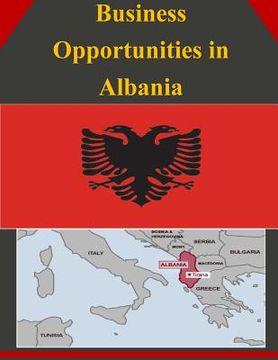Reseña del libro "Business Opportunities in Albania (en Inglés)"
Following the collapse of communism in 1992, Albania continues to make strides in its transition from a closed, centrally planned economy to a modern, open-market economy. The country is pursuing aggressively its Euro-Atlantic integration agenda. In 2000, Albania became a World Trade Organization (WTO) member and in June 2006, the Government of Albania (GOA) signed a Stabilization and Association Agreement (SAA) with the European Union (EU), the first step towards the EU accession process. In April 2009, Albania became a North Atlantic Treaty Organization (NATO) member country and at the same time, submitted its application for EU candidacy status, both considered major milestones in the country's history. A small country with a population of 2.83 million people (2011 census) and a landmass approximately the size of Maryland, Albania's economy posted strong growth in the 2000s, with an average annual growth rate of 6 percent from 2000 to 2008. Although Albania largely was spared from the initial severe fallout of the 2008 financial crisis, the prolonged European crises, coupled with a challenging fiscal and budgetary environment and structural problems in the local economy, has caused economic output to steadily decline since 2009. 2013 GDP growth likely will decline to 0.7 percent, the lowest in more than a decade, and far from the government's initial projection of 3.1 percent. Faced with mounting public debt (approximately 70 percent of GDP), large government arrears to the private sector, and a weak economy, the government signed a $457 million arrangement with the International Monetary Fund at the end of 2013 and took out two development policy loans worth a total of $220 million from the World Bank in May 2014. The three-year IMF arrangement aims to help Albania pay back government arrears, pursue fiscal consolidation, and to improve debt sustainability. The World Bank development policy loans are intended to modernize Albania's public financial management system to reduce and better manage Albania's public debt. The Albanian government hopes these loans, coupled with better customs and tax collections, will spur economic growth and help the government reduce its public debt. The IMF estimates that the economy will grow by 2 percent in 2014, boosted by an increase in exports and a modest recovery in domestic demand. Inflation in 2013 averaged 1.9 percent. The official unemployment rate during 2013 rose to 16.9 percent from 14.4 percent in 2012 and domestic labor costs remain among the lowest in Europe. In 2013, the Albanian lek was stable versus both the dollar and the euro. The banking sector in Albania remains viable, profitable, and well capitalized; however, increasing rates of nonperforming loans (around 25 percent) and low domestic lending are growing concerns for the sector. At the end of February 2014, deposits totaled $940 million and loans totaled $590 million. Estimated GDP for 2013 was $12.8 billion and GDP per capita was $4,598. Although GDP per capita has increased over the last decade, it is still amongst the lowest in the region. The Albanian economy has four main sectors. The service sector is the largest and comprises 57.8 percent of GDP, followed by agriculture at 19.5 percent, construction at 10.7 percent, and industry at 12 percent of GDP. The economy remains characterized by a narrow base of exports, a wide base of imports, and low competitiveness. The agriculture sector employs half of the country's workforce, mostly in small subsistence-level family farms.

